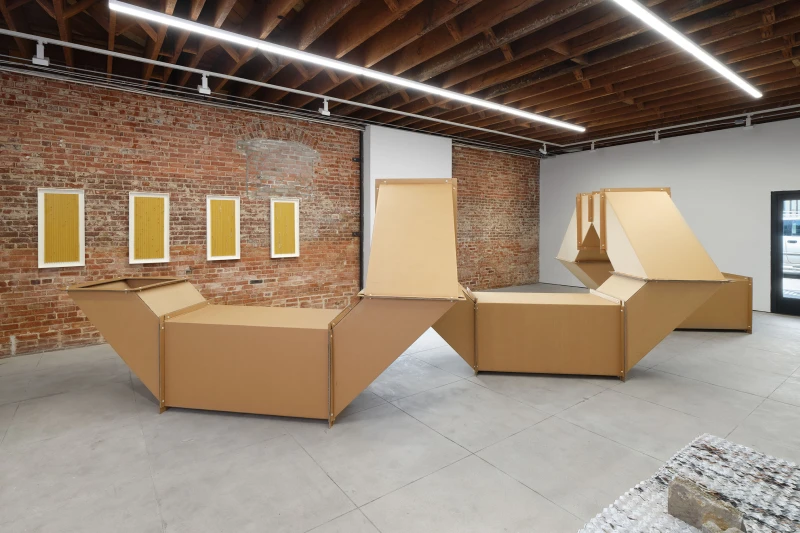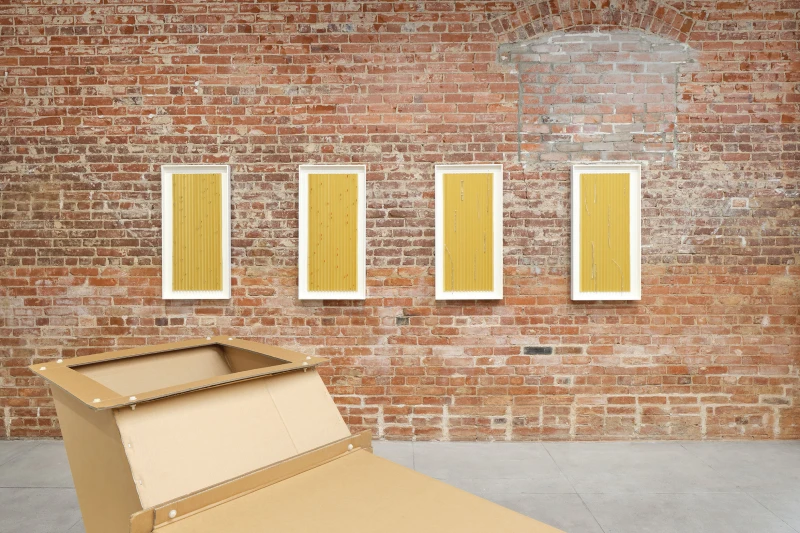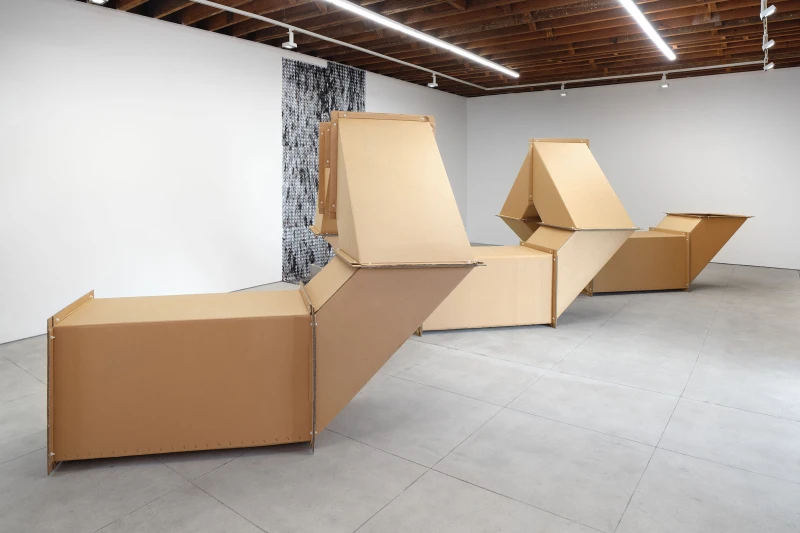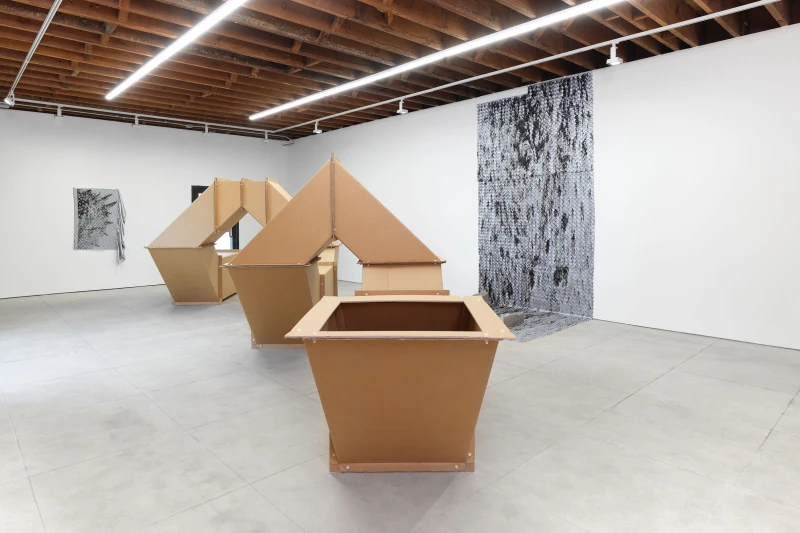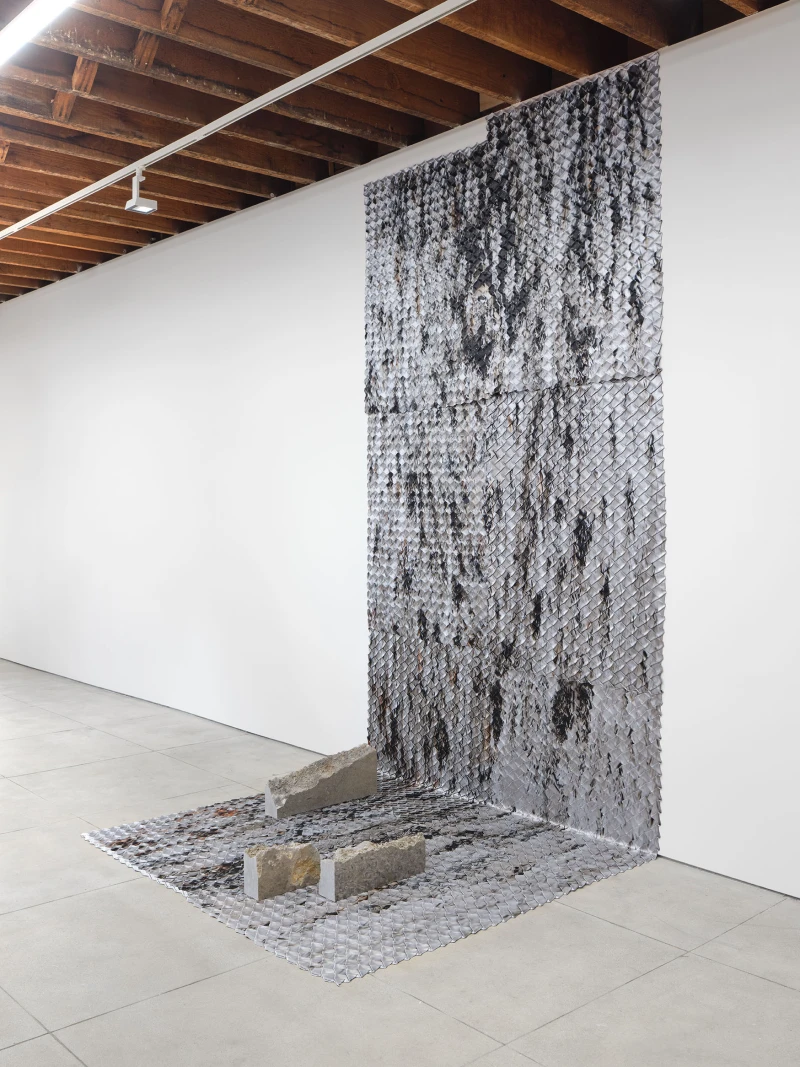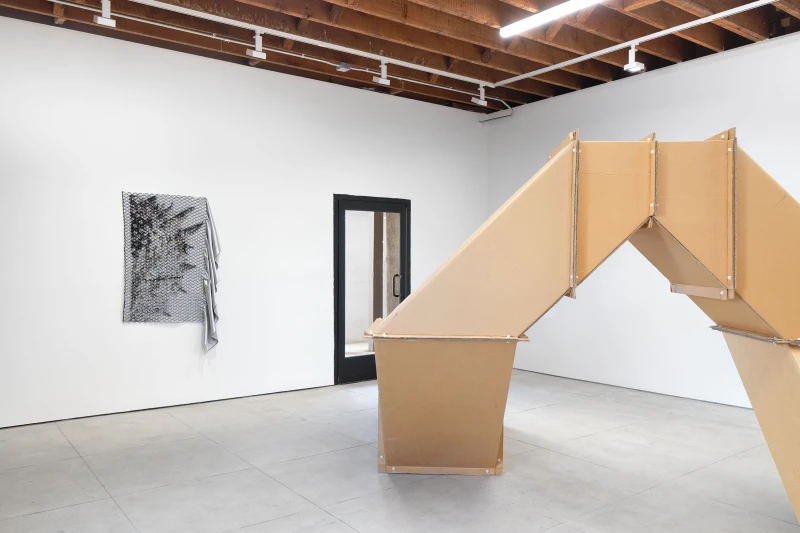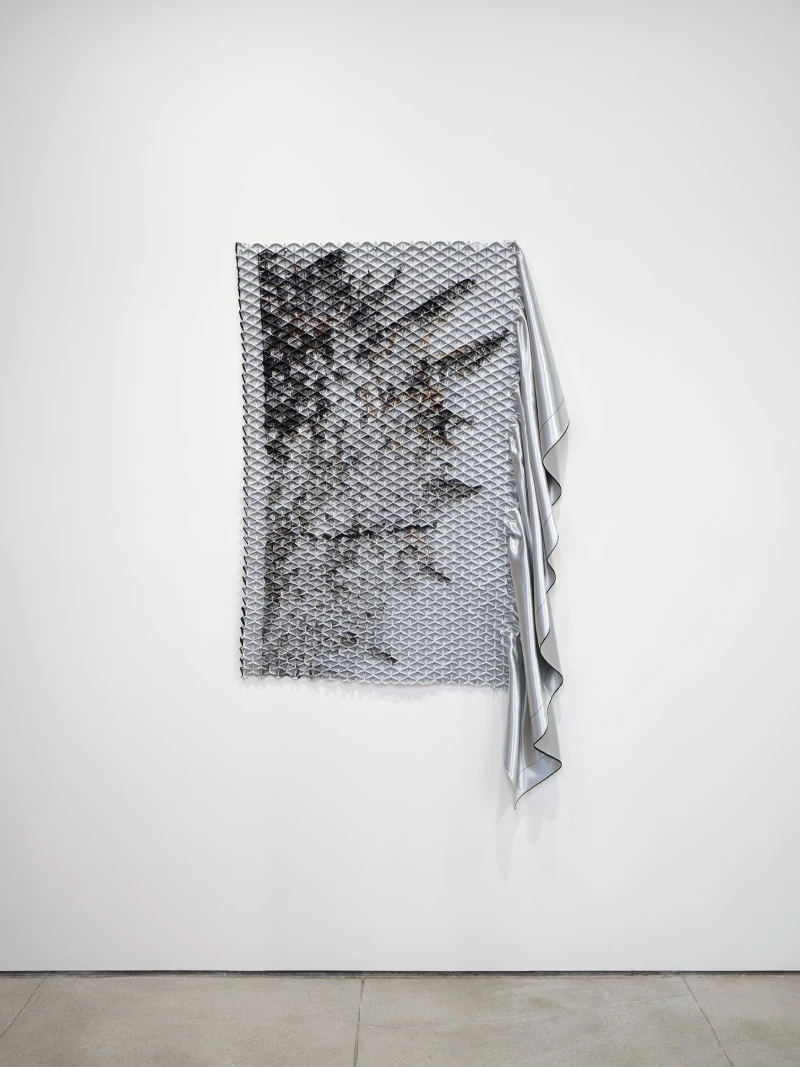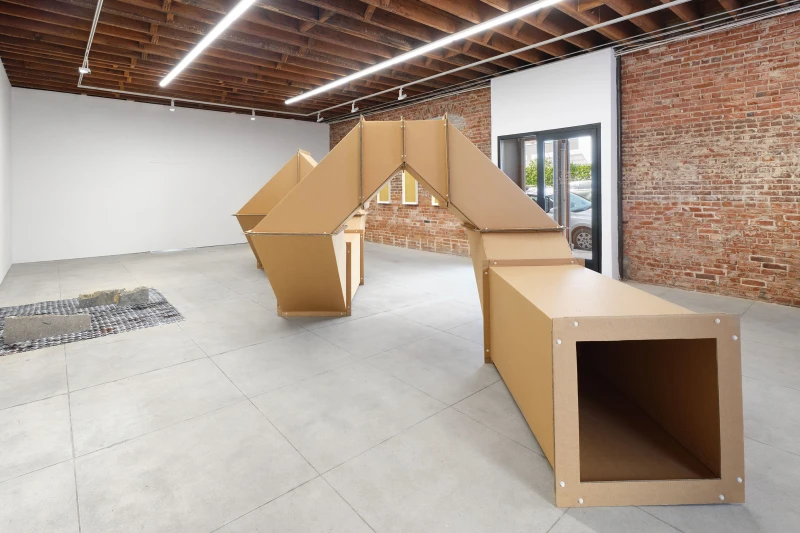CHARLOTTE POSENENSKE &
ALICE CHANNER
March 29 - May 17, 2025
Both Charlotte Posenenske (1930 – 1985) and Alice Channer (b. 1977) find forms and materials within industrial process- es and present them as sculpture. Posenenske’s sculptures, both playful and alienated, recalling Amazon boxes and HVAC ducts, were intended to be positioned at will by her audience, who she designated ‘consumers’. Channer describes her work as a ‘21st Century Process Art’. Across her practice, Channer relentlessly combines the bodies of living beings with industrial forms, materials and processes.
Both artists’ sculptural works are light on their feet; they travel rolled (Channer) or folded (Posenenske), unfurling and expanding during installation to dramatic sculptural effect. The exhibition is composed entirely from artworks constructed by flat surfaces that the artists then fold to create volume. Malleable, flat, dry materials –cardboard, fabric and paper – are folded to expand and contract across the gallery, taking walls, floors and bodies with them.
Channer and Posenenske are both known for using photography to document their sculptures entangled within specific industrial locations. Posenenske photographed her Serie DW cardboard pieces provocatively positioned underneath aero- planes at Frankfurt airport. Channer photographs her works during specific stages or ‘births’ of their industrial production. Channer’s images are then made visible through artists books like Skinned and Detouched, and her recent monograph Heavy Metals / Silk Cut.
Whilst Posenenske wished for her sculptural forms to be inhabited and activated by her audience, Channer’s glamorous and fashionable surfaces host body parts extracted from the living world. Her new series of drawings Sharks and Wood- worm are adorned with metallized and enamelled thorns and twigs harvested from the canal near her London studio. Channer asked herself what air conditioning vents connecting to ventilation ducts designed by Charlotte Posenenske might look and feel like, and the linear pleats of her drawings, as if air-conditioning vents that are growing mutant thorns, swimming with sharks, or infested by strange woodworms, are the result.
The pleated panels of Channer’s Soft Sediment Deformation (Metallized Bodies) armor-plate the gallery wall as a hybrid, scaly animal and industrial pelt. Partially polished fossil limestone extracted from the Peak District mountains in the UK weighs the metallic panels to the floor, accessorizing Channer’s sculptural garment. This part of the stone, where the fossilized bodies of the crinoids that constitute the biogenic material are visible, is usually discarded. The pleated metallic fabric has been printed with a violently distorted image of a molted, metalized spider crab shell, one of the many such shells Channer has made sculptures with over the last decade. Channer imagines the sculpture as armor for multiple vul- nerable, glamorous bodies (the bodies of the crab, the wall, the fossils, and the artist herself).


